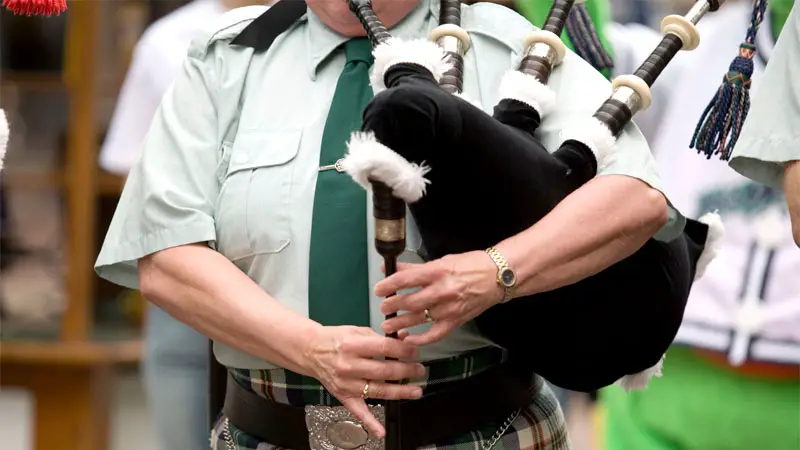Bagpipes – the mere utterance of this word can bring shivers of excitement to some and cause others to run for their earplugs. But love them or hate them, bagpipes are far more popular than most people realize and are among the oldest instruments still in use.
For example, in Scotland, pipers are regarded as the most important members of any clan, and one enterprising music major in the US became the first person in the world to earn a doctorate in bagpipes. In fact, there are countries throughout Europe, Asia, and Africa that can boast native varieties of bagpipes.
Bagpipes consist of a few major components.
- The bag is the obvious core of this instrument, which is either fed via lung power or a bellows system.
- The mouthpiece can have one or two reeds, while a chanter (the flute-like part) contains holes for creating the notes.
- Finally, the drones are the additional pipes which produce the characteristic droning sound – although some bagpipes lack any drones.
Like other musical instruments, there are quite a few different types of bagpipes which we’ll cover below.
See Also: Different Types of Harps
Types of Bagpipes
1. Ancient Egyptian Bagpipes

Not much is known about these now-extinct bagpipes outside of a few vague references. However, it’s widely believed that bagpipes were first created in Egypt and records suggest they had existed at least as far back as 400 BC. A Hittite carving from 1,000 BC may show an even older incarnation of bagpipes, but this is widely debated.
The descriptions of Egyptian pipers describe a bunch of Tebans who played bagpipes that were made of bone and dog skin. It’s unknown if these pipes also had drones, as no physical examples have been recovered at this time.
2. Borderpipe
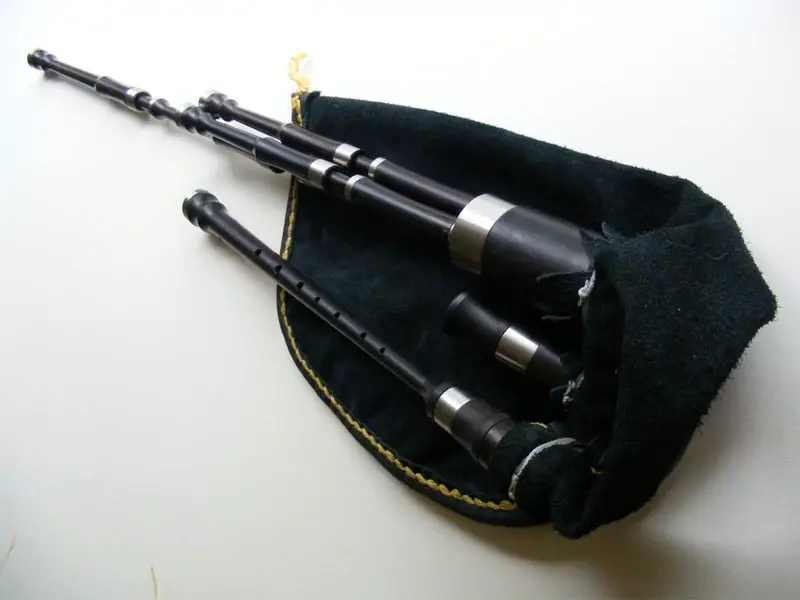
These bagpipes got their common name because they were popular along the border between England and Scotland. On the English side, they’re also known as half-long pipes, while in Scotland they’re often referred to as lowland pipes. They’re often confused with the Scottish Smallpipe, although the two are quite different.
Border pipes have a moderately loud sound, making them a great companion for stringed instruments. The chanter has a conical bore with seven finger holes and one thumb hole.
While it generally plays nine notes, it can achieve additional higher notes through overblowing. The bag is fueled by a bellows, and the three drones are connected to the bag with a single stock.
3. Chanter
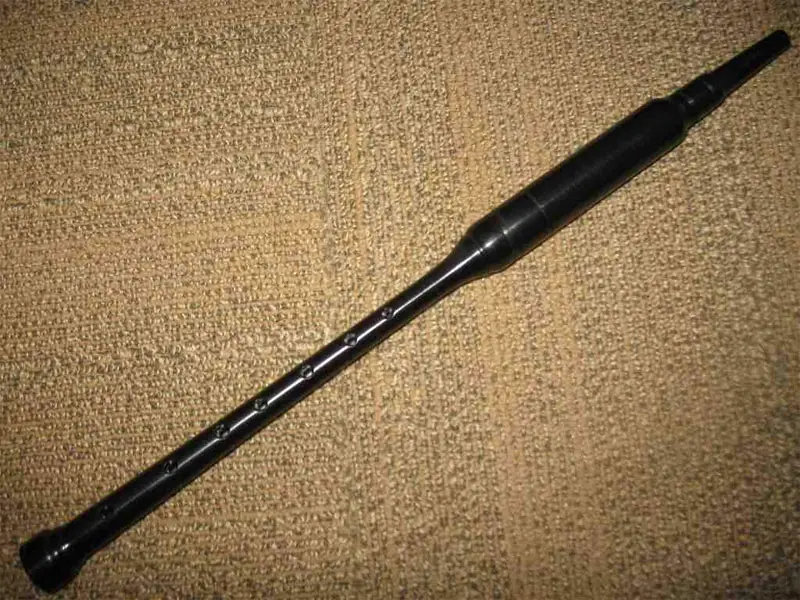
While this is technically only part of a set of bagpipes, it can also be considered its own instrument to some degree. Those learning Scottish bagpipes will start off with just the chanter, on which they learn two tunes (usually ‘Amazing Grace’ and ‘Flower of Scotland’) before being fitted for their pipes.
Many often use their chanter as a separate instrument for practice, as it’s far quieter and less likely to draw protest. Detachable chanters are most often found on smallpipes outside of Scotland. However, many bagpipes from other countries completely lack the ability to detach the chanter.
See Also: 24 Types of Drums
4. Gaida
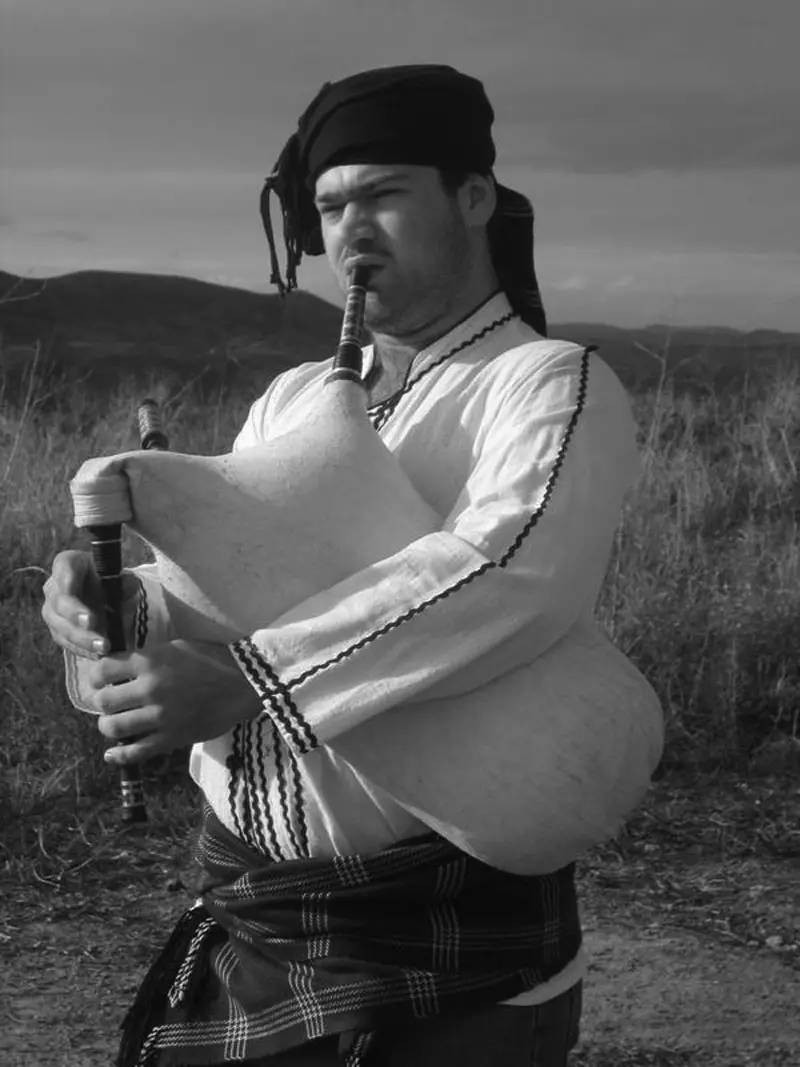
There are a lot of variations for this bagpipe, depending on the country. They’re found throughout Southeastern Europe and are usually made of goat or sheep hide. These are treated using different methods, depending on the country.
In most countries, the chanter has a cylindrical bore, although the Bulgarian version has a conical bore. In Serbia, the gaida has a double bore.
Gaidas feature a flea-hole, a small hole that allows the chanter to produce notes a half step higher when uncovered. All gaidas are single-reed instruments. Meanwhile, the blow pipes may or may not include a return valve, and there is only one drone present.
5. Gaita
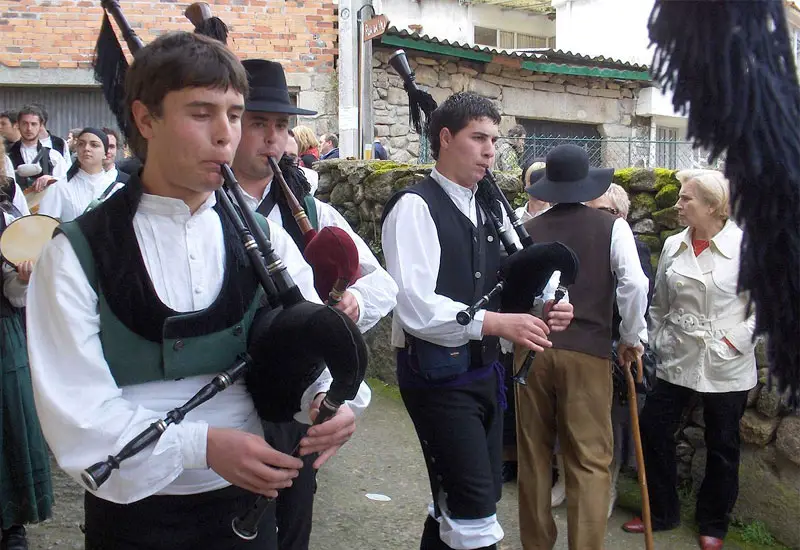
The term “gaita” is a generic word for bagpipes used throughout Portugal, Spain, and the Balearic Islands. Despite sounding similar to the gaida, there are distinctions that make gaitas unique. They generally have conical chanters, with the ability to play a partial second octave when overblowing.
In most cases, the gaita has a single drone, although the gaita de boto stands out for its tenor drone which runs parallel to the chanter. While most modern gaitas use a variation on the term gaita in their names, older versions did not.
A good example of this was a medieval gaita called the odrecillo, which sometimes lacked a drone.
6. Great Highland Bagpipe (A’ Phìob Mhòr)
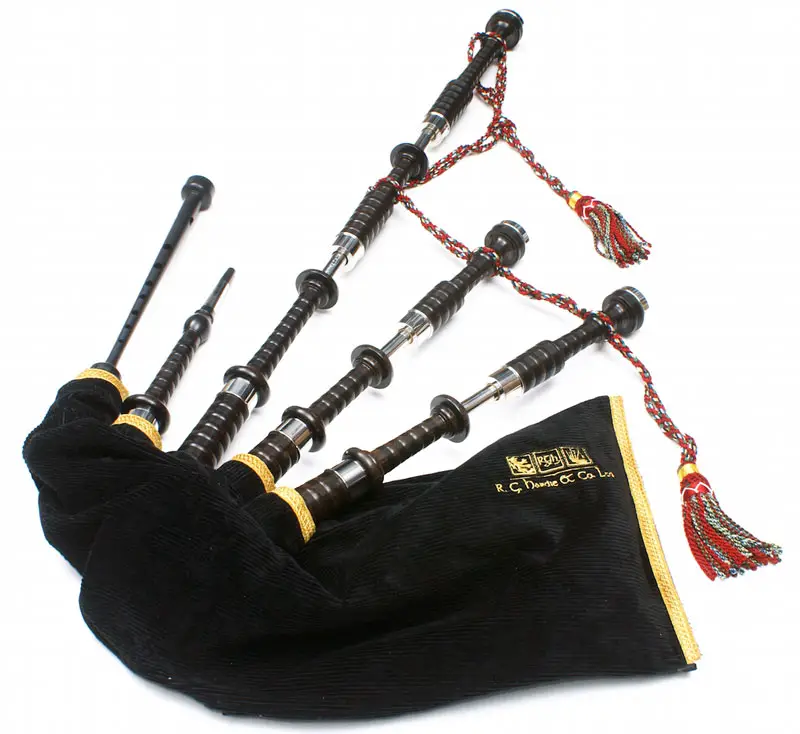
A’ phìob mhòr is perhaps the single most famous type of bagpipe in the modern world. Some early depictions suggest this bagpipe existed in 13th century Spain, although it had reached Scottish shores by 1400.
The remains of a set of pipes purported to have been used during the Battle of Bannockburn in 1314 is kept by a Scottish clan, although the authenticity of this claim is a matter of ongoing debate.
It is also believed that bagpipes were used during the peculiar Battle of the North Inch in 1396. However, there wasn’t a reference to a distinct Highland style of bagpipes until 1598, which is likely around the time the modern great Highland bagpipe was developed.
These bagpipes were often employed during war, either to warn the clan of approaching groups (and whether or not they appeared hostile), or to direct troops in a manner similar to war drums. However, they were only briefly used in both World Wars due to how many pipers were killed, and have not been used in battle since the Aden Emergency in 1967.
The Great Highland bagpipe has a double reed chanter, as well as a single reed for each of the drones. There’s one bass drone and two tenor drones, all connected to the bag individually. The chanter is tuned to a Mixolydian mode scale. As these pipes are fueled through the piper’s breath (as opposed to a bellows), the cane reeds will fall out of pitch over time, as the moisture distorts them.
7. Uilleann Pipes (Píobaí Uilleann)
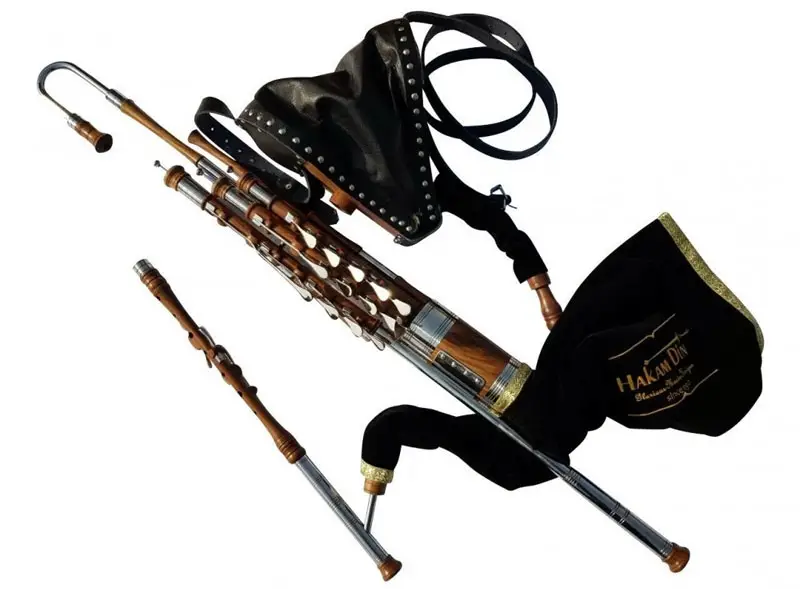
The national bagpipes of Ireland, these pipes have existed for centuries but only gained the name uilleann pipes after poet Grattan Flood invented the term, which quickly caught on. The bag is filled using a small bellows which can be operated by the player’s dominant arm.
These pipes are rather unique, with a chanter that can only play two full octaves, with the ability to play flats and sharps. Overblowing the chanter produces the higher octave, while normal blowing produces the lower one. They also tend to have a softer, sweeter tone than many more common bagpipes.
8. Welsh Pipes (Pipa Cŵd)
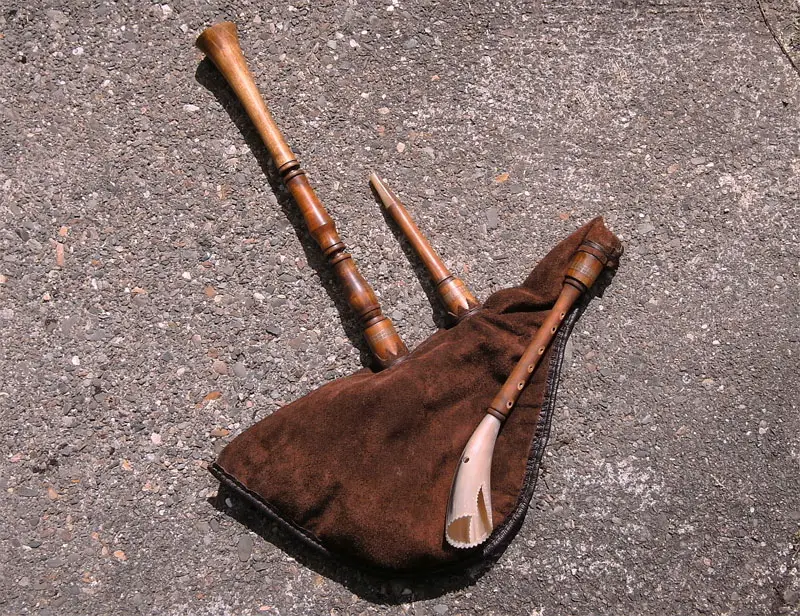
Welsh pipes have a variety of names, depending on where in the country you go. Much like Scottish pipes, Welsh bagpipes have a detachable chanter, which is known as either a pibgorn (single-reed) or shawm (double reed) when played on its own.
They’ve existed since at least the 1300s and tend to be broken down based on the number of reeds, although there can be minor variations between one region and another. The single reed version tends to have six finger holes and one thumb hole, while the double reed versions are more versatile and can sometimes accommodate multiple play modes.
9. Piva
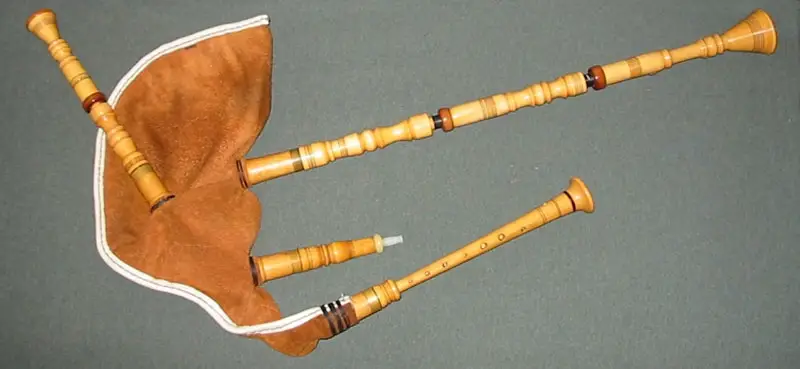
This Italian bagpipe is also popular in the Italian-speaking Ticino portion of Switzerland. It has a double reed chanter and a single drone. The instrument is commonly played alongside other instruments, such as the accordion, piffero, or shawm.
10. Svensk Säckpipa
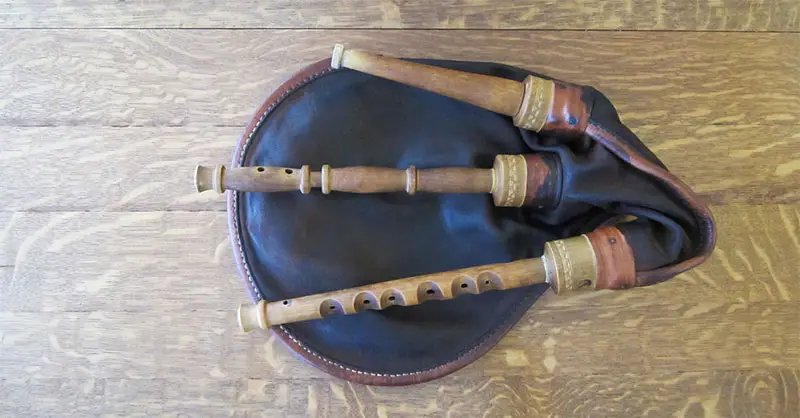
Sweden’s säckpipa are actually a variety of bagpipes, all from Sweden. However, the term is used in the Anglosphere to specifically describe the Dalama version. This is because the Dalama säckpipa is the only one to have been still in use during the early 20th century.
However, säckpipa found a revival in 1981 when a new design was manufactured that blended elements of ten museum pipes and a slight modification so it could better accompany other instruments.
The general design is a single reed, cylindrical bore chanter capable of one octave, a surprisingly small bag, and may include up to three drones and a bellows, depending on the variety. Some also include multiple chanters tuned to different keys.
Related: 13 Types of Trombones
11. Scottish Smallpipe
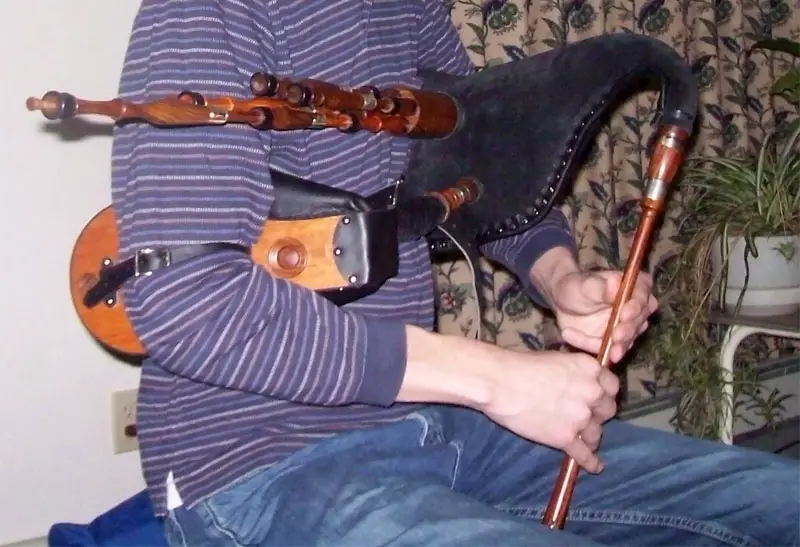
Developed in the 1980s based on much older styles of bagpipe (including the borderpipe), the modern Scottish smallpipe has a bellows and cylindrical bored chanter.
While it most commonly has three drones, this number can vary. Older forms of the Scottish smallpipe date back to the 1400s.
12. Volynka
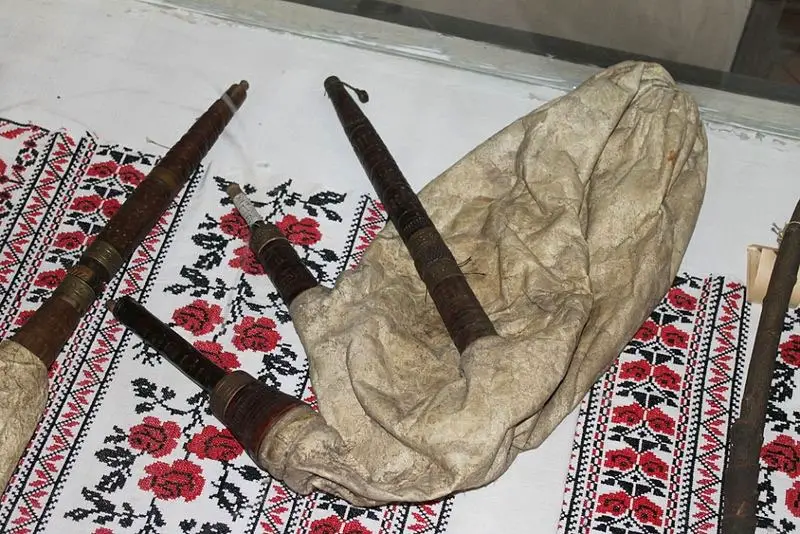
This Slavic bagpipe is popular in both Russia and Ukraine, with the bag containing a reservoir of either goat skin or a basketball bladder. The chanter has a varying number of holes and a double reed. It also has one to three drones.
Interestingly enough, the volynka fell out of common use by the 20th century, only to be revived by Russian rock bands. Today, it is seeing increased use among folk bands in both countries.
13. Żaqq
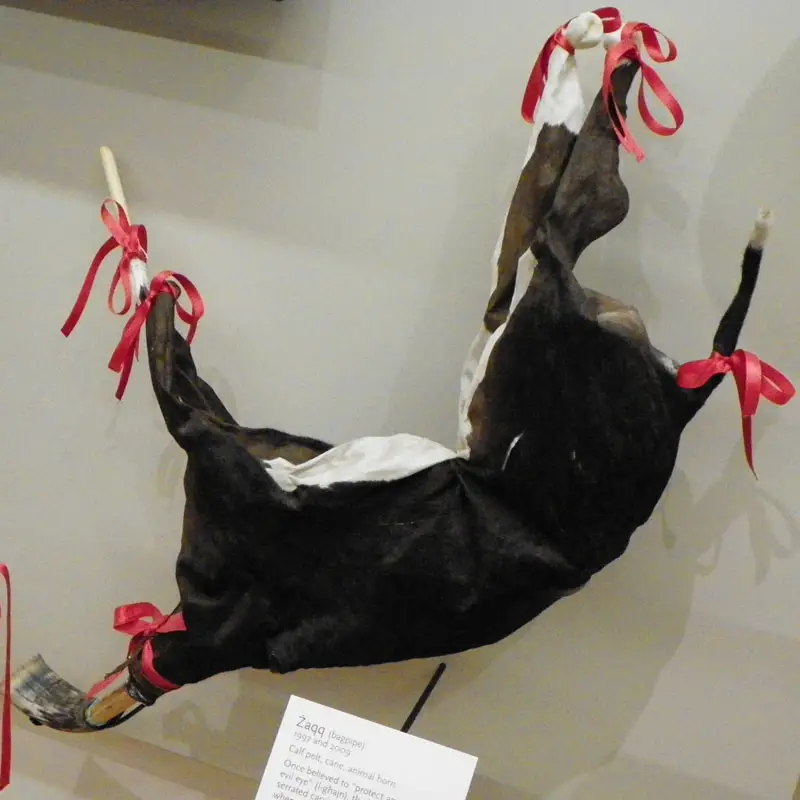
This Maltesian bagpipe is the most popular in its home country and includes a double chanter and no drones. The single-reed instrument fell out of common use in the 1970s due to the rising popularity of the accordion, but there are still efforts to revive interest.
The name itself translates to “belly” or “sack”.

